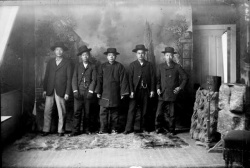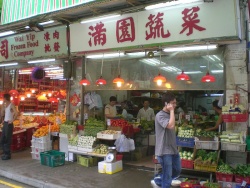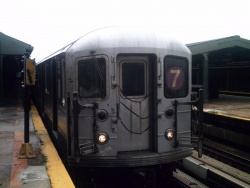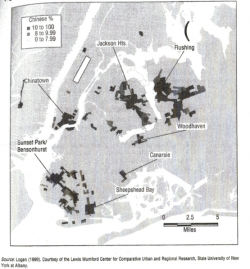From The Peopling of New York City
Contents |
Getting Comfortable
Chinatown was an incredible harbor to the incoming wave of Chinese immigrant, no matter how small the number might have been. Unlike the other immigrants, the Chinese came in a steady flow instead of in great numbers because of the Chinese Exclusion Act. A census taken in 1860 showed that only 120 Chinese people lived in New York City, .2% of the total population in United States. [1]A Hong Kong merchant named Wo Kee moved his general goods store from Oliver to Mott in 1872, creating the first commercial anchor in the area that would be known as Chinatown. [2] The first group settled in a three street area of Mott, Park And Doyer Street on the Lower East Side of Manhattan. [3]In 1888, the neighborhood of Chinatown grew only slightly in size, inching into Pell, Bayard, Doyer, and Canal.[4]The growth of Chinese residents fostered the emergence of a new living quarter, moving away from the Fourth Ward docks, they moved into the Sixth Ward blocks above Chatham Square. A small number of stores, boardinghouses, mutual aid associations, and shrines emerged to serve the community along Baxter Street and lower Mott, where it spreads into Chatham Square.[5] Many in the area of Chatham Square lived in dormitories, cheap parts of private homes falling apart, also further divided into cubicles for those who can afford minimal amount of privacy. The Chinese that lived in these houses were stuffed into tri-tiered bunks, where there were often two to a bed. Occasionally there would be three to a bed for rates as low as $1.50 per week. Few Chinese men lived uptown with the rich, but working as servants.[6]
Fresh off the Boat
The majority of Chinatown residents arrived from Canton, South China. They were the major Cantonese Speakers. There were also an additional group of Sino-Vietnamese settlers. Since they were also fluent in Cantonese, and shared similar cultural values with the Southern Chinese, they settled in nicely. On the other hand, the newer major group was the Fuzhounese from Fujian Province. They did not mingle with the Cantonese and created their own "subenclave in a three block area on East Broadway under the Manhattan Bridge". [7]
Contemporary Times
Due to the arrival of so many new immigrants, there was a great pressure on Chinatown's housing. People from Hong Kong, who had funds to invest, started buying buildings in Chinatown, north in Little Italy, and east on the Lower East Side. Even with this expansion of housing, there was not sufficient residential areas for the new immigrants, especially with the prices soaring higher by the day.
The Queen's Flushing neighborhood then began to harbor the new wave of Asian immigrants who were Taiwanese. Flushing also included other Asian countries such as India, Pakistan etc. In the 1980's, people from Hong Kong started settling in Sunset Park-Bay Ridge in Brooklyn. The newer wave of immigration, the one during the ending of the 20th century, were unlike the earlier immigrants. While the earlier immigrants were mostly laborers, the newer generation was education with college degrees and were called "uptown" Chinese. [8]
- Return to Residential Patterns
- Return to Chinese
References
- ↑ Foner, Nancy. New Immigrants in New York. Columbia University Press, 2001. Print. (152)
- ↑ Burrows, Edwin G., and Mike Wallace. Gotham. A History of New York City to 1898. Oxford UP, 1998. (Page 1127)
- ↑ Foner, Nancy. New Immigrants in New York. Columbia University Press, 2001. Print. (152)
- ↑ Burrows, Edwin G., and Mike Wallace. Gotham. A History of New York City to 1898. Oxford UP, 1998. (Page 1129)
- ↑ Burrows, Edwin G., and Mike Wallace. Gotham. A History of New York City to 1898. Oxford UP, 1998. (Page 1127)
- ↑ Burrows, Edwin G., and Mike Wallace. Gotham. A History of New York City to 1898. Oxford UP, 1998. (Page 1128)
- ↑ Foner, Nancy. New Immigrants in New York. Columbia University Press, 2001. Print. (153)
- ↑ Binder, Fredrick M., and David M. Reimers. All Nations Under Heave. An Ethnic and Racial History of New York City. Columbia UP, 1995. (page 232)



